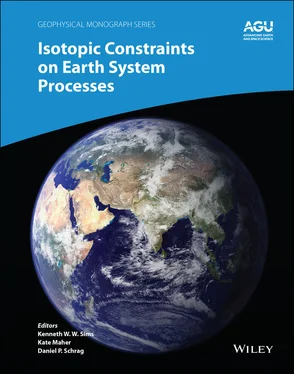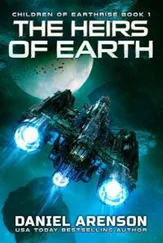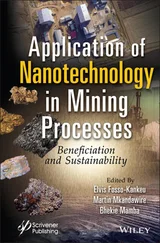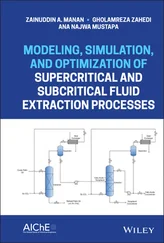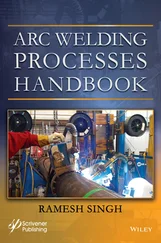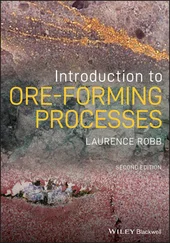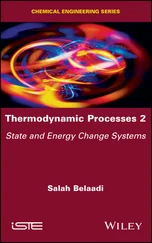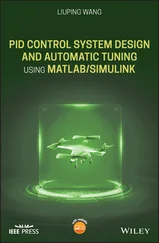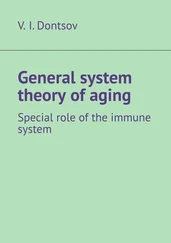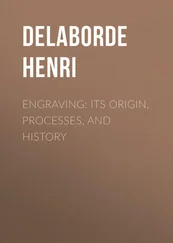Isotopic Constraints on Earth System Processes
Здесь есть возможность читать онлайн «Isotopic Constraints on Earth System Processes» — ознакомительный отрывок электронной книги совершенно бесплатно, а после прочтения отрывка купить полную версию. В некоторых случаях можно слушать аудио, скачать через торрент в формате fb2 и присутствует краткое содержание. Жанр: unrecognised, на английском языке. Описание произведения, (предисловие) а так же отзывы посетителей доступны на портале библиотеки ЛибКат.
- Название:Isotopic Constraints on Earth System Processes
- Автор:
- Жанр:
- Год:неизвестен
- ISBN:нет данных
- Рейтинг книги:4 / 5. Голосов: 1
-
Избранное:Добавить в избранное
- Отзывы:
-
Ваша оценка:
- 80
- 1
- 2
- 3
- 4
- 5
Isotopic Constraints on Earth System Processes: краткое содержание, описание и аннотация
Предлагаем к чтению аннотацию, описание, краткое содержание или предисловие (зависит от того, что написал сам автор книги «Isotopic Constraints on Earth System Processes»). Если вы не нашли необходимую информацию о книге — напишите в комментариях, мы постараемся отыскать её.
Volume highlights include: Isotopic Constraints on Earth System Processes
The American Geophysical Union promotes discovery in Earth and space science for the benefit of humanity. Its publications disseminate scientific knowledge and provide resources for researchers, students, and professionals.
Isotopic Constraints on Earth System Processes — читать онлайн ознакомительный отрывок
Ниже представлен текст книги, разбитый по страницам. Система сохранения места последней прочитанной страницы, позволяет с удобством читать онлайн бесплатно книгу «Isotopic Constraints on Earth System Processes», без необходимости каждый раз заново искать на чём Вы остановились. Поставьте закладку, и сможете в любой момент перейти на страницу, на которой закончили чтение.
Интервал:
Закладка:
Early in his career, Don pioneered the use of Nd isotope systematics in the Earth sciences and, at his first academic position at UCLA, many of his graduate students applied Nd systematics to studies of the origin and evolution of continental lithosphere, particularly in North America. In Chapter Four , one of these former students, Lang Farmer, reviews the chemical and radiogenic isotopic data from volcanic rocks and their entrained mantle‐derived xenoliths in SW North America and discusses how these data have revised our understanding of the Cenozoic evolution of this region.
Perhaps Don’s most cited work is his paper introducing his assimilation‐fractional crystallization (AFC) model as a means to understand magma chamber processes (DePaolo, 1981). In Chapter Five , Hammersley et al. present a comprehensive study of a large caldera system in Ecuador. In this study, Hammersley et al. use a finite difference application of the DePaolo AFC model (initially described in Hammersley & DePaolo, 2006) to interpret the chemical and isotopic evolution of the system and incorporate physical considerations of the rate at which magma can be generated and supplied to the crust from the mantle (Jellinek & DePaolo, 2003).
Nearly 30 years ago, as a graduate student of Don DePaolo, John Lassiter helped log core from the pilot hole of the Hawaii Scientific Drilling Project, thus starting a long career studying ocean island basalt genesis. In 1998, Lassiter and Hauri published a paper examining correlations between Os and O isotopes in Hawaiian basalts (including samples from the Mauna Kea drillcore), and argued for the presence of recycled oceanic lithosphere in the Hawaiian plume to explain anomalously “light” oxygen isotope signatures. In Chapter Six , Lassiter et al. re‐examine the role of shallow assimilation in Hawaiian basalt evolution by studying the geochemical signatures of “cognate” xenoliths from Mauna Kea, demonstrating that the hypothesis they proposed in 1998 is likely incorrect. This is another example of how science progresses as new tools become available, new data come to light, and old ideas either stand or fall in the face of new challenges.
Don’s first foray into the application U‐ and Th‐decay series systematics was with PhD student Ken Sims (Sims et al., 1995, 1999), a coauthor on this paper. Since then, both have gone on to take advantage of this versatile isotopic tool, whose nuclides’ half‐lives and chemical behaviors are diverse and uniquely suited to the study of recent geologic processes. In Chapter Seven , Giammanco and Sims demonstrate the use of short‐lived 220Rn (t 1/2= 55.6 seconds) and 222Rn (t 1/2= 3.825 days), coupled with CO 2efflux measurements, to establish the depths and timescales of degassing and monitor changes in subsurface magmatic activity beneath Mt Etna. Information that is critical for eruption forecasting on active volcanos.
PART II: LOW‐TEMPERATURE/SHALLOW EARTH PROCESSES
In Chapter Eight , Laakso and Schrag address the paradox of the apparently stable record of δ 13C in carbonate rocks in the face of external evidence for early periods of low atmospheric oxygen. To reconcile the paradox, they link models for the C and O cycles to propose an additional negative feedback between precipitation of isotopically light authigenic carbonates, which results in relatively stable carbon isotopes in carbonate platforms even during shifts in organic carbon burial. Schrag was introduced to thinking about the carbon cycle and its links to climate when he, as DePaolo’s first student at Berkeley, was sent to the University of Chicago to work with Frank Richter, playing a small part in a collaboration between DePaolo and Richter that has persisted for more than 35 years.
Inspired by John Christensen’s landmark paper with Don on zoned garnet Rb‐Sr chronology (Christensen et al., 1989), Ph.D. student Ethan Baxter became interested in refining garnet geochronology utilizing Don’s first love: the Sm‐Nd system. This led to his first paper with Don on the topic (Baxter et al., 2002) and to many subsequent years of work on Sm‐Nd garnet petrochronology since then (see Baxter et al., 2017, for an overview). Chapter Nine by Maneiro et al. represents a significant methodological advance that would have been considered impossible twenty years ago: the ability to date single grains of detrital garnet in the sedimentary record. These advances – including sub‐nanogram analysis of Nd by thermal ionization mass spectrometry (TIMS) – are an extension of Don’s pioneering contributions to Sm‐Nd analytical methods and applications.
Chapter Ten provides an overview of efforts to use the stable isotope ratios of redox‐active elements to track critically important redox reactions in modern and ancient environments. This line of research arose from a very fortunate confluence of factors at Berkeley around 1995: The DePaolo group was developing groundwater‐related research directions and was beginning work on novel isotope measurements (i.e. 44Ca/ 40Ca and 11B/ 10B), some of which employed the double spike method. Researchers at Lawrence Berkeley National Laboratory were working intensely on the environmental geochemistry of Se, and Tom Bullen at USGS Menlo Park was interested in Se isotopes. These were all necessary ingredients for the development of Se isotope measurements and environmental applications. Once that path was established, work on the other elements followed naturally.
Chapters Eleven and Twelve, originally submitted as a single contribution, are presented as a pair of chapters. The first (Turchyn & Druhan) provides an overview of how reactive transport effects manifest in S isotope signatures; the second (Druhan & Turchyn) reports a model‐based study of coupled sulfur and calcium isotope fractionation in open systems. Although Don has not worked much with the S isotope system specifically, he has both explored and exposed the power of using two isotope systems that differ in their reactivity or transport within a given system to understand and quantitatively constrain reactive flow (DePaolo, 2006). This is, in many ways, the bedrock of isotope‐enabled reactive transport modeling and this work explores and expands on these fundamental concepts. Don used this paired isotope approach to great success in exploring the relative evolution of strontium and oxygen in hydrothermal systems, allowing him to independently calculate flow velocity and fracture spacing. Chapters Eleven and Twelve expand on this work to explore the utility of calcium and sulfur isotope dynamics under conditions of microbially induced carbonate mineralization.
In Chapter Thirteen, Messa et al. build upon much of the original stable Ca isotope research that Don was involved in when “Biological control of calcium isotopic abundances in the global calcium cycle” was published by Skulan et al. in 1997. This work, of which Don was second author on, was one of the original projects that illustrated stable Ca isotope fractionation within food chains, revealing that predators exhibit lighter stable Ca isotope ratios than their prey. This chapter expands upon this discovery, and a subsequent study by Skulan and DePaolo (1999), by detailing how stable Ca isotope ratios can reveal more than trophic level positioning, but also inter‐organism Ca isotope fractionation caused by diverse metabolic processes such as the generation of various hard tissues throughout an individual’s lifecycle.
The editors and authors gratefully acknowledge the reviewers’ comments, which greatly improved the manuscripts herein. We also wish to express our gratitude for the hard work, thoughtful comments, and diligence of the editorial staff at AGU and Wiley.
Kenneth W. W. Sims Department of Geology and Geophysics University of Wyoming, USA
Читать дальшеИнтервал:
Закладка:
Похожие книги на «Isotopic Constraints on Earth System Processes»
Представляем Вашему вниманию похожие книги на «Isotopic Constraints on Earth System Processes» списком для выбора. Мы отобрали схожую по названию и смыслу литературу в надежде предоставить читателям больше вариантов отыскать новые, интересные, ещё непрочитанные произведения.
Обсуждение, отзывы о книге «Isotopic Constraints on Earth System Processes» и просто собственные мнения читателей. Оставьте ваши комментарии, напишите, что Вы думаете о произведении, его смысле или главных героях. Укажите что конкретно понравилось, а что нет, и почему Вы так считаете.
